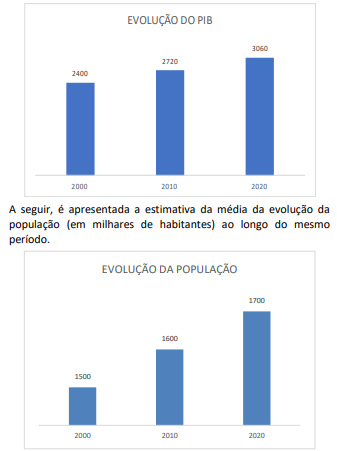Questões de Concurso
Comentadas para policial legislativo federal
Foram encontradas 154 questões
Resolva questões gratuitamente!
Junte-se a mais de 4 milhões de concurseiros!
Read Text II and answer the question that follow it.
Text II

From: https://aghlc.com/resources/articles/2016/how-to-prevent-phishing-attacks160812.aspx?hss_channel=tw-2432542152
Read Text II and answer the question that follow it.
Text II

From: https://aghlc.com/resources/articles/2016/how-to-prevent-phishing-attacks160812.aspx?hss_channel=tw-2432542152
Read Text II and answer the question that follow it.
Text II

From: https://aghlc.com/resources/articles/2016/how-to-prevent-phishing-attacks160812.aspx?hss_channel=tw-2432542152
( ) The “spray-and-pray” business model belongs to a late period in the history of ransomware.
( ) The analysis indicates that cybercrime is far from mushrooming.
( ) The text argues that solutions to cybercrime can be reached in a jiffy.
The statements are, respectively
Sendo assim, é correto afirmar que

O PIB per capita médio estimado do país nesse período é igual a
O tigre corre a 30m/s, e o javali tenta escapar a uma velocidade de 10m/s.
A distância percorrida pelo javali até ser alcançado pelo tigre é igual a

Assinale a opção que indica a frase em que a seleção do verbo está corretamente feita.
“A porta do restaurante se abriu e Guilherme viu dois homens entrarem e sentarem-se nos bancos do balcão. Sua aparência e sua atitude lhe causaram desagrado. Guilherme demorou a pedir o menu.
— O que vamos comer? Perguntou.
— Não sei, disse Homero, refletindo sobre sua última refeição. O que é que você vai pedir, Bernardo? Eles não são daqui, pensou Guilherme, que conhecia todo mundo a quilômetros. O que é que eles podem estar querendo?
Do lado de fora, começava a escurecer. O comparsa deles, que os esperava no carro na esquina da rua, começava a achar que as coisas estavam demorando muito. Eles tinham encontrado, ou não, o sujeito que iam matar? Os dois homens sentados no balcão consultaram o menu.”
Sobre a focalização narrativa neste segmento, assinale a afirmativa correta.
“Os trabalhos de inverno chegavam ao fim, e nessa tarde de fevereiro, ensombrada e fria, João, com sua charrua, acabava de chegar à sua propriedade, onde o esperavam ainda duas horas de trabalho. Havia uma extremidade do terreno onde ele devia semear trigo, uma variedade escocesa de grão, a poulard, mais robusta, aconselhada pelo vizinho, que lhe havia posto à disposição alguns hectolitros de sementes. Em seguida, João ajustou a charrua na trilha da sementeira e, fazendo a ponta de metal entrar na terra a ser arada, gritou roucamente para os cavalos. [....] a terra remexida exalava um odor forte, odor de cantos úmidos onde fermentam os germes.”
(Émile Zola)
“Na outra extremidade da terra trabalhada, um jovem de boa aparência conduzia um conjunto magnífico: quatro pares de animais novos, com suas cabeças curtas, que rescendem ainda ao touro selvagem, com grandes olhos ferozes, movimentos bruscos, mostrando ainda a revolta diante do jugo recentemente imposto. O jovem que os guiava ainda devia preparar um terreno para pastagem, lugar ainda com troncos secos, um trabalho de atleta, para o qual eram suficientes sua energia, sua juventude e seus oito animais quase indomados.”
(George Sand)
Sobre esses textos, assinale a afirmativa correta.
Assinale a que se refere ao Naturalismo.
Assinale a que cabe ao gênero denominado crônica.
Assinale a opção que apresenta o segmento de Machado de Assis que segue mais de perto essas instruções.
Em função do exposto, aplica-se perfeitamente ao jornalista o seguinte ditado latino: